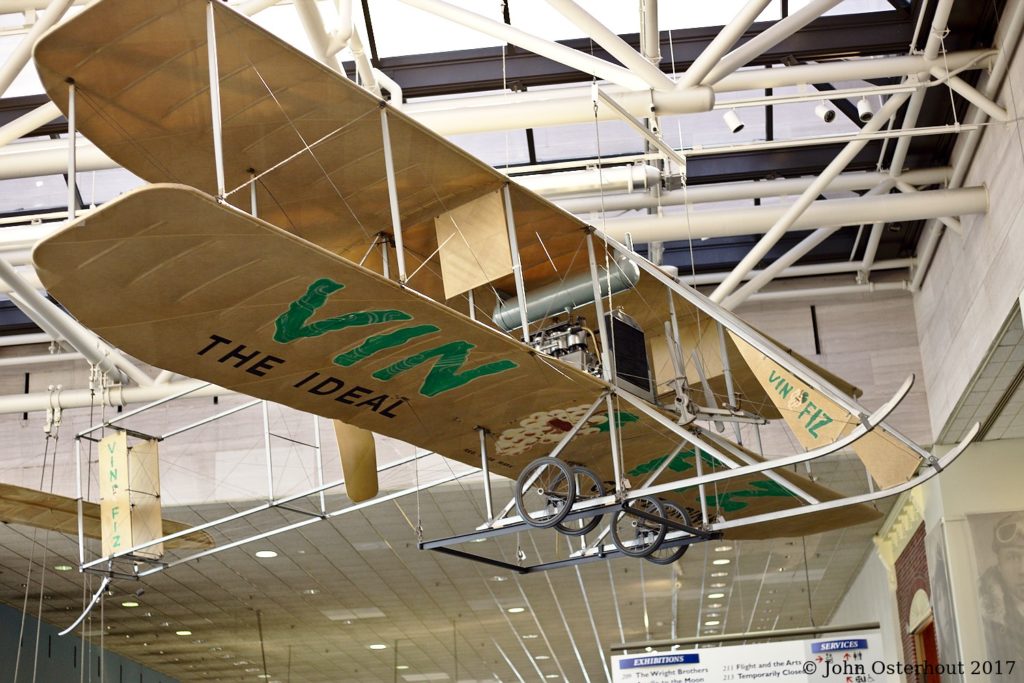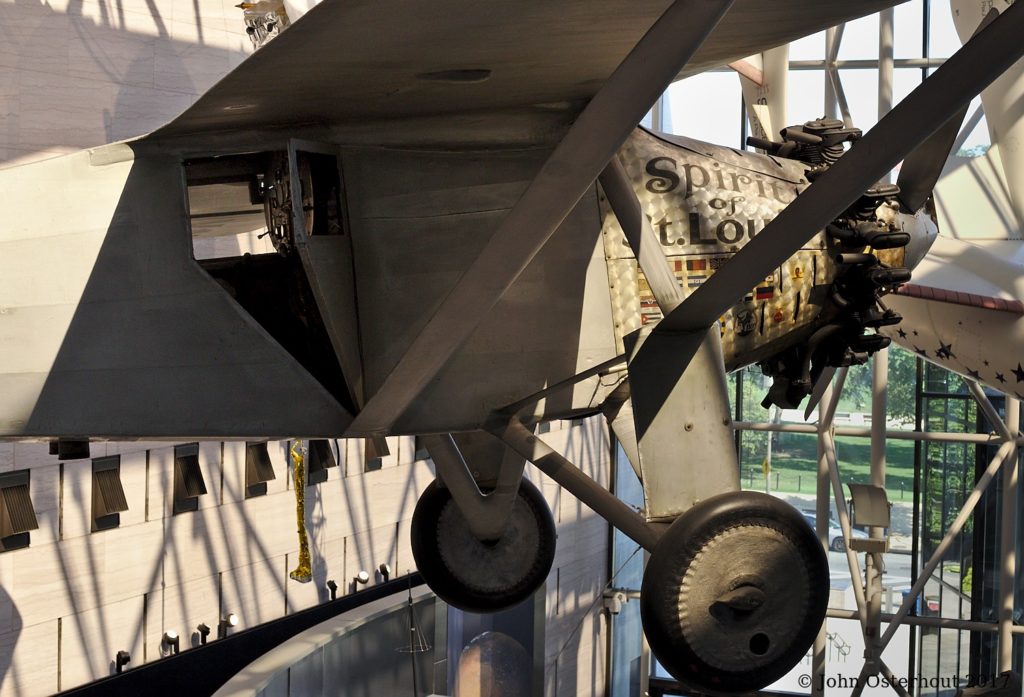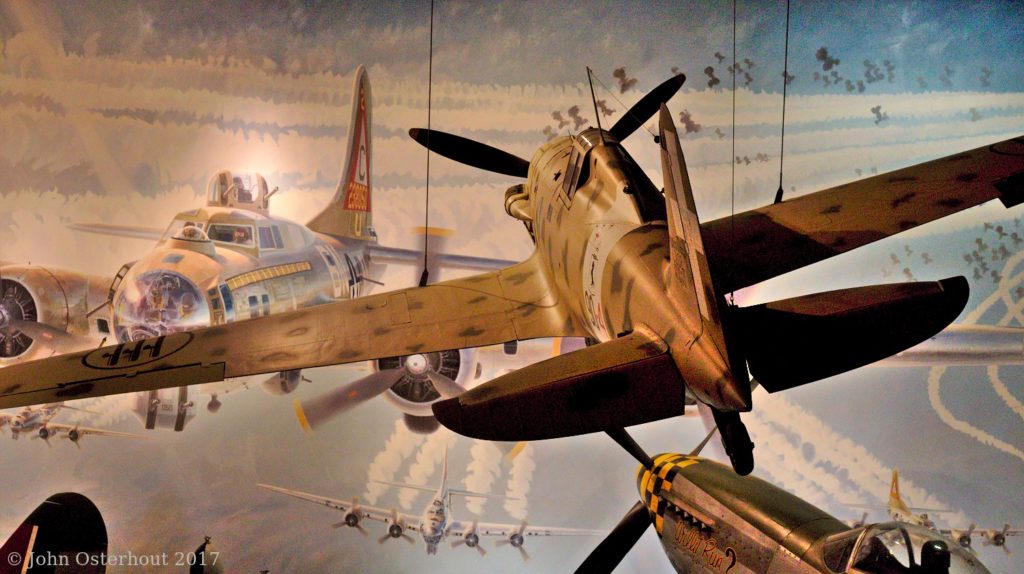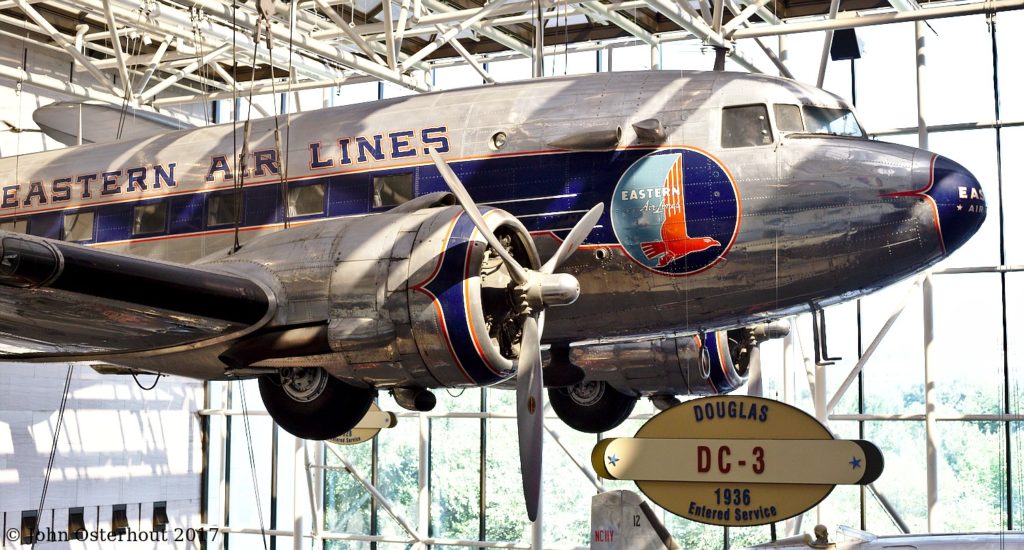In August of 2017, I was visiting Washington DC for a scientific meeting. My wife and I had only part of one day to visit the museums. We picked the National Air and Space Museum. Here are five frames of airplanes from the museum.
VIN FIZ

The first crossing of the United States by air was made in the VIN FIZ. This plane is a Wright Brothers model EX, a downsized version of the Wright Model B flyer. On September 17, Calbraith Perry Rodgers, known as Cal, set out from Sheepshead Bay, New York to attempt the crossing. He was trying to win a prize of $50,000 (the equivalent of over one million today) offered by William Randolph Hearst for the first crossing of the country by airplane in thirty days.
Roger’s flight was sponsored by the Armour Company who had just introduced a grape-flavored soft drink called, you guessed it, VIN FIZ. The Armour company provided a special train with accommodations for Roger’s family, the mechanic, and a car of parts to repair the VIN FIZ during the attempt.
After thirty days, Rogers was only in Kansas City, Missouri, but decided to continue to make the first transcontinental flight. He flew south through Texas. After San Antonio, he made a loop through south Texas to El Paso, then it was almost a straight shot to Pasadena, California, the official end of the challenge. Rogers decided to continue to Long Beach and dip the wheels in the Pacific Ocean. He left Pasadena for the 23 mile trip on November 12 but a series of mishaps, including crashes and injuries, delayed his arrival until December 10. Roger’s 4,321 mi journey took 82 hours and 4 minutes total flying time giving an average airspeed of 55.6 mph.
Underneath “VIN” on the right underwing is written “THE IDEAL”. On the other side, underneath FIZ, it says “GRAPE DRINK”. The picture in the middle is supposed to be a bunch of grapes.
Spirit of St. Louis

Charles A. Linbergh flew this plane, A Ryan NYP, from New York to Paris to complete the first transatlantic flight. He set out May 20, 1927 and flew the 3,610 miles to Paris in 33 hours, 30 minutes.
After his return to the United States (by ship), he flew the Spirit of St. Louis to Mexico and through Central America. The flags you see on the cowling are the flags of the countries he visited.
Wright Flyer

On December 17, 1903, at Kitty Hawk, North Carolina, Orville Wright flew for 12 seconds and 120 feet. Later, Wilbur Wright set the record for the day with a flight of 59 seconds covering 852 feet. The photo shows part of the flyer in the The Wright Brothers & The Invention of the Aerial Age exhibit at the museum. I couldn’t discover which of the brothers the mannequin is meant to represent, but I’m calling it Orville since he was the first to fly.
Folgore

This is the Aeronautica Macchi C.202 Folgare (Lighting) in the World War II Aviation exhibit. The Folgare was the best of the fighter planes flown by the Regia Aeronautica (Italian Royal Air Force or RA) in WWII. The markings on the plane are that of the 4º Stormo (Wing), 10º Gruppo (Squadron), and 90º Squadriglia (Flight). These planes operated in the deserts of Libya in the summer of 1942, hence the main coloration and markings.
Underneath the Folgare is a P-51D Mustang named “Willit Run?” The planes face a mural of B-17 Super Fortresses flying in heavy flak. This exhibit may have been taken down since both the Folgare and the Mustang are listed as “not currently on display”.
DC-3

This is the venerable Douglas DC-3, first flown in 1935. This specimen was retired from Eastern Airlines in 1952 after a flight from San Salvador to Miami. The DC-3 was so successful that by 1938 ( a mere three years after its introduction) it accounted for 95% of commercial air traffic in the United States.
These photos were taken with a Canon 6D armed with the Canon 50mm f1.8 normal lens. I was traveling light this trip and only brought the 50mm. The photos were processed from RAW files with Darktable, which is free and open source software available for Windoze, Mac, and various flavors of Linux.
For enlarged views of the photos, see the Five Frames Gallery.
Deja vu all over again..Good pics and excellent educational editorials.